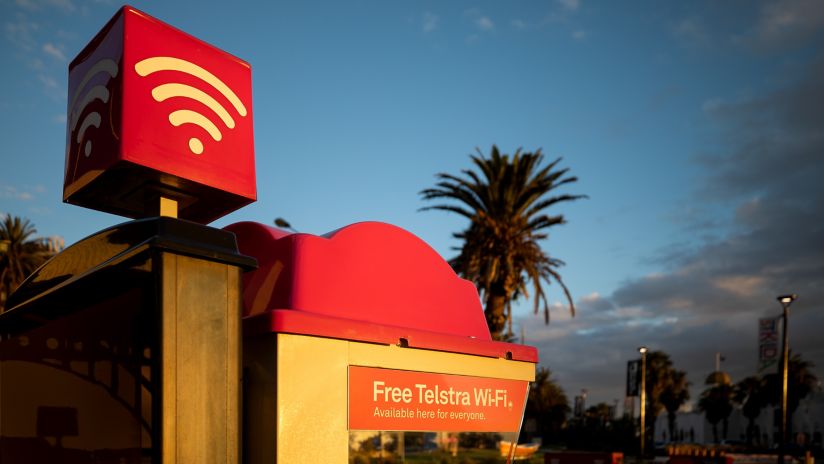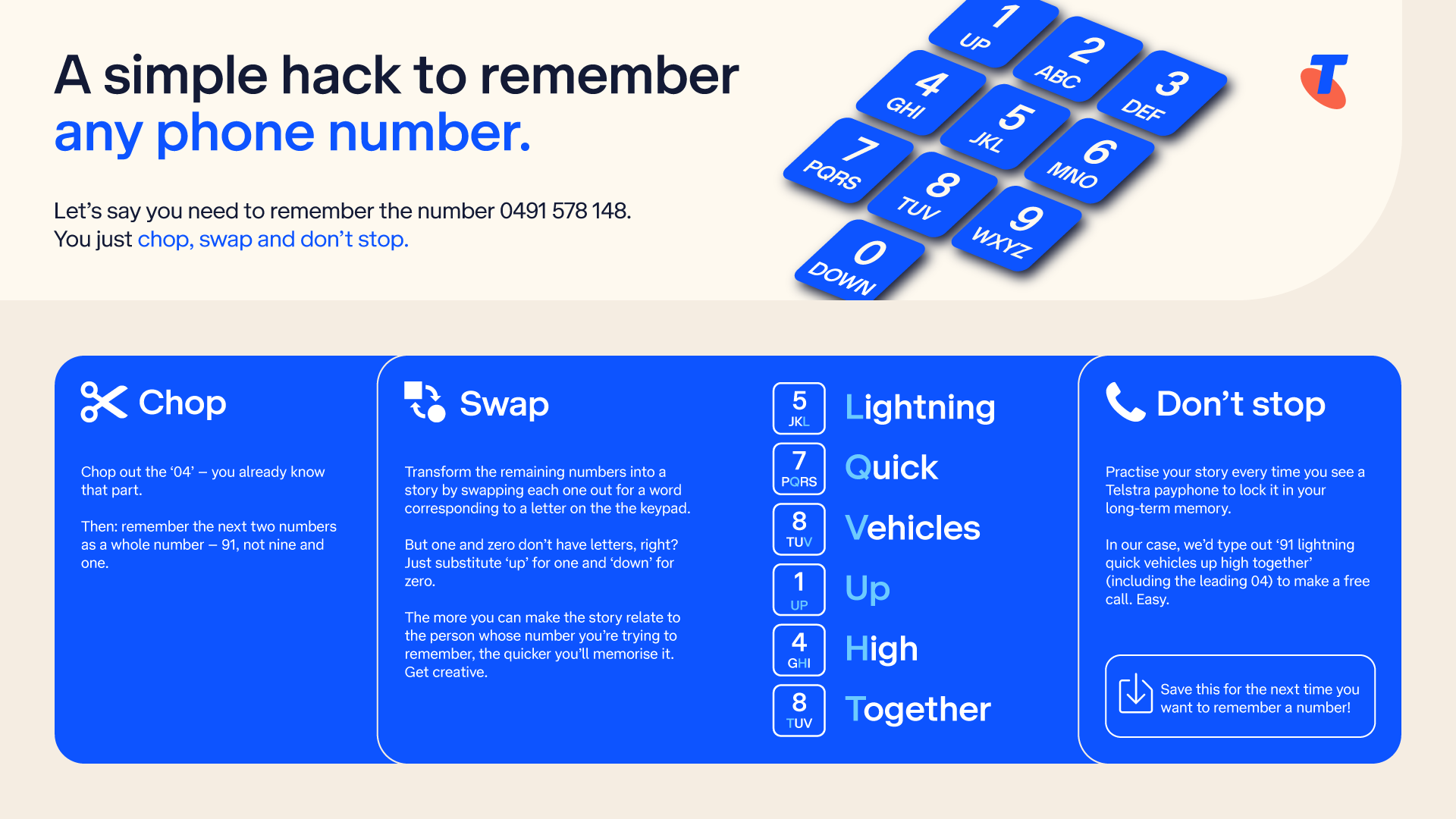How to remember phone numbers better, and why it’s important for your safety
New national research from YouGov reveals over half of Australians (54%) admit they can’t remember even a single mobile or landline phone number from memory, in a vulnerable situation. We’ve enlisted a two-time Australian memory champion to help.

Being without your phone in times of need can instantly put anyone in a vulnerable situation. And according to new research by YouGov, almost half of Australians (47%) wouldn’t know what to do if they were in a vulnerable situation* and they needed to contact someone without their smartphone.
(*including a crisis or emergency)
Whether your smartphone is out of juice or otherwise unavailable to use, you can make local, national or mobile calls from our payphones for free to stay in touch with family and friends. But imagine you didn’t have access to your smartphone’s contacts – would you be able to remember any numbers? If you answered no, you’re among the 54% of Aussies who struggle to remember even one mobile or landline number in a vulnerable situation.
Here’s why you should commit at least one number to memory, how to remember it better (according to a 2 x Australian Memory Champion), and how to call it for free from any of our payphones.
What is ‘number amnesia’?
Our smartphones are more than just for games and housing pretty photos of our cats. They’re our banks, our wallets, our Rolodex of all the most important people in our lives.
We’ve given the job of remembering important mobile numbers to our phones, which is why many of us could now be experiencing ‘number amnesia’: the inability to recall a single phone number from memory.
In fact, Aussies are more likely to remember their childhood landline number (23%) before remembering a contact number they could actually use in times of need such as a sibling (19%) or best friend (17%).
How well can Australians remember phone numbers?
Our research says we can all do better:
1. While almost half (48%) would call their partner in a vulnerable situation*, a third (33%) of married Aussies admit that they don’t actually know their partner’s mobile number off by heart.
2. Generationally, younger generations are more likely than those who are older to admit that they feel vulnerable when they don’t have their mobile phone on them (Gen Z: 71%, and Millennials: 70%, compared to Gen X: 59%, and Baby Boomers: 49%.)
3. Gen Z and Millennials are more likely than their older counterparts to be able to recall a phone number by heart (91% and 94% respectively, compared to Gen X: 84%, and Baby Boomers: 74%.)
4. One in eight (13%) have had their vehicle break down with no access to a mobile phone.
5. The top actions Aussies say would take in a vulnerable situation without access to their mobile phone and contact numbers would be to go to a nearby shop to contact friends and family via social media/email (60%) followed by going to the local authorities (51%) or flagging down a bystander to contact friends and family via social media/email (40%).
And if you think being without your device isn’t that likely, you might be surprised to learn that half of Australians (50%) have been caught short with a flat battery and no access to a charger.
The research tells us that most of us (78%) actually want to get better at remembering numbers. So, we called on Anastasia Woolmer, a record-setting memory champion and memory coach.
'Chop, Swap, Don’t Stop': a simple trick to remember phone numbers

This simple technique uses language, emotion and visualisation to link numbers to words, making them easier to remember.
Say you want to remember the number: 0491 578 148.
1. CHOP:
Drop the ‘04’, you already know this. Then, remember the next two numbers as a whole – e.g. 91, not nine and one.
2. SWAP:
Break the rest of the number up into two three-number chunks and transform them into a story. Assign each number a word using a corresponding letter on the keypad.
But hold up. The 1 and 0 keys don’t have letters, right? In their case, just think about their location on the keypad and use ‘up’ (1) and ‘down’ (zero).
Let’s try it out with the number 0491 578 148. We’ll make it even easier by integrating the first two numbers into the story.
Our chunks are 578 and 148. Which could turn into:
91 lightning (5) quick (7) vehicles (8) / up (1) high (4) together (8).
All you’ve got to do is type that out that little tale next time you want to get in touch with someone important.
3. DON’T STOP:
Repeating the technique every time you see a free Telstra payphone will lock it in even further. This is called ‘spaced repetition’ and is the best way to cement something into your long-term memory.
We’re here to help when times are tough
Payphones are vital for those experiencing vulnerable circumstances. We are seeing the importance of payphones grow more and more each year, and we're glad that we can provide this important lifeline when it matters most.
In 2023 alone, Australians nationwide placed more than 23 million free calls using Telstra payphones. In addition to free calls and texts from our payphones, we now also have 3,300 payphone sites with free Wi-Fi access. We’re working to get that number even higher so more people can benefit from connectivity.
As of November, last year, we’re also in the process of having all our payphones across the country prominently feature the numbers of six national support services (click the link to call the support service directly):
We’re committed to helping keep one million Australians in vulnerable circumstances stay connected every year and have a range of support services to help through difficult times, as you can see below through our payphones.
Our website has the information you need to access our assistance options.
Where is my nearest payphone?
We have a detailed map of our 14,000+ free payphones above, and help is only ever a call away. Check above to find your nearest.
For more detailed information on the features and accessibility services available at your closest payphone, check out the full Payphone Finder on Telstra.com.